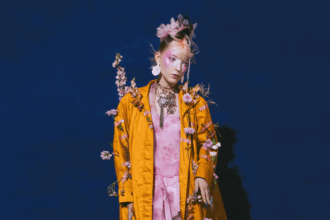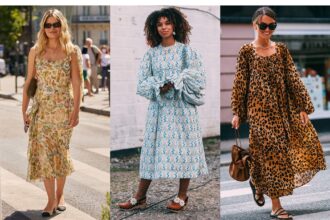Introduction to the concept of style across borders
Fashion is a powerful form of expression that transcends borders. Each country, region, and community has its own unique style, shaped by history, culture, and tradition. From the vibrant saris of India to the sleek suits of Italy, cultural fashion trends tell stories as diverse as the people who wear them.
As we explore style around the world, we’ll uncover how these garments reflect values and beliefs while showcasing individuality. The differences in fashion not only celebrate heritage but also highlight how globalization intertwines with local customs.
Join us on this journey through fabric and flair as we delve into what people wear across continents—and why it matters more than ever!
The influence of culture on fashion
Culture is the heartbeat of fashion. Every piece of clothing tells a story rooted in history, tradition, and values. From vibrant textiles to intricate patterns, cultural influences shape how we express ourselves through style.
Take the colorful saris of India or the elegant kimonos from Japan. Each garment reflects centuries of heritage and craftsmanship. These traditional outfits often carry meanings that go beyond aesthetics.
Moreover, local customs play a significant role in daily attire. In many African nations, for example, bold prints symbolize community pride and identity. Similarly, European streetwear merges historical references with contemporary flair.
Fashion becomes a canvas where culture paints its narrative. Through trends and styles across borders, we see how diverse backgrounds contribute to a global tapestry of creativity and expression. The blend creates not only unique looks but also fosters understanding among different cultures worldwide.
Traditional clothing in different regions of the world
Traditional clothing offers a fascinating glimpse into the heart of various cultures. From the vibrant saris of India to the intricate kimonos of Japan, each garment tells a story.
In West Africa, colorful prints and patterns dominate traditional attire. The bold designs often represent ethnic identity and community ties. In contrast, Scotland’s tartans carry deep historical significance connected to clans.
The Middle East showcases flowing abayas and kaftans that embody both elegance and modesty. Meanwhile, Native American tribes celebrate their heritage with handcrafted garments adorned with beads and feathers.
Each region’s clothing not only reflects aesthetic preferences but also practical adaptations to local climates. This rich variety underlines how style around the world is shaped by history, geography, and social values—elements that continue to influence modern fashion choices today.
How globalization has impacted fashion and style
Globalization has woven a complex tapestry in the fashion industry. It has blurred geographical boundaries, allowing styles to intermingle and evolve.
Fashion from one corner of the world can quickly influence trends globally. A streetwear style emerging from Tokyo might set off a wave of popularity in Paris or New York overnight. This rapid exchange creates an exciting mix but also raises questions about cultural appropriation.
While global brands dominate the marketplace, local artisans strive to maintain their heritage through unique designs. The challenge lies in finding balance—celebrating diversity while fostering originality.
Sustainable practices have also emerged due to globalization’s reach. With consumers increasingly aware of environmental issues, there’s a growing demand for ethical production methods that respect both cultures and resources.
In this interconnected landscape, fashion serves as both a form of expression and dialogue between diverse traditions.
Popular fashion trends around the world
Fashion trends evolve rapidly, reflecting the unique influences of each region. In Tokyo, streetwear reigns supreme. Bold colors and oversized silhouettes capture attention, blending traditional elements with a modern twist.
Meanwhile, in Milan, elegance is key. Tailored suits and high-quality fabrics dominate the scene. Italian designers emphasize craftsmanship that speaks to luxury and sophistication.
Across Africa, vibrant prints tell stories of heritage and identity. Designers like Ozwald Boateng showcase how cultural fashion trends can celebrate tradition while pushing boundaries.
In Latin America, bright hues are prevalent in both casual wear and formal attire. Designers embrace folkloric motifs that connect to their roots yet appeal to contemporary tastes.
Each region offers distinct styles that not only highlight personal expression but also honor local customs and histories. The diversity found in global fashion truly makes it an art form worth exploring further.
The rise of sustainable and ethical fashion globally
Sustainable and ethical fashion is gaining momentum worldwide. Consumers are becoming more aware of the environmental impact of their clothing choices. This awareness drives demand for eco-friendly materials and transparent production processes.
Brands that prioritize sustainability are rising to the occasion. They focus on reducing waste, using organic fabrics, and ensuring fair labor practices. This shift not only benefits the planet but also empowers workers in the fashion industry.
Innovative designs often come from upcycling or repurposing existing garments. This creative approach adds a unique touch to modern styles while promoting sustainability.
Social media plays a significant role in this movement. Influencers advocate for sustainable brands, showcasing how style can align with responsibility.
As more people embrace these principles, traditional notions of fashion evolve. The trend towards conscious consumerism reshapes what it means to be stylish today—making ethical choices fashionable around the globe.
Why it’s important to embrace and appreciate diversity in fashion
Embracing diversity in fashion enriches our understanding of the world. Each culture brings unique colors, patterns, and traditions that tell a story. When we appreciate these differences, we celebrate human creativity.
Fashion is more than just clothing; it reflects identity and heritage. By exploring various styles, we gain insight into different values and histories. This fosters respect among communities.
Diverse fashion also encourages innovation. Designers draw inspiration from global influences, leading to fresh ideas that push boundaries. A rich tapestry of styles can spark new trends while honoring their origins.
Moreover, appreciating cultural fashion promotes inclusivity. It challenges stereotypes and breaks down barriers between people. By embracing diverse expressions of style around the world, we create a more connected society where everyone feels valued for who they are.
This celebration of diversity ultimately enhances our personal expression too—allowing us to mix influences in exciting ways that reflect our individuality.
Celebrating the uniqueness of style in different cultures
Fashion is more than just clothing; it’s a reflection of identity, history, and tradition. Each culture brings its own unique flair to the fashion landscape, showcasing a tapestry of colors, fabrics, and designs that tell stories of their people. When we embrace cultural fashion trends from around the world, we celebrate this diversity.
Every outfit carries meaning. From the intricate patterns of African kente cloth to the elegant simplicity of Japanese kimono styles, each piece has roots that run deep in cultural significance. Fashion differences are not merely aesthetic—they provide insight into values and beliefs held by societies.
As we navigate through our globalized world, appreciating these variations enriches our understanding of one another. It fosters respect for different lifestyles and perspectives while encouraging an appreciation for craftsmanship that transcends borders.
In celebrating uniqueness in style across cultures, we open up avenues for dialogue and connection. Let’s champion this vibrant patchwork that unites us all through creativity while honoring where it originates from—because every thread tells a story worth sharing.










